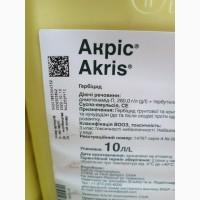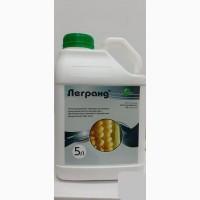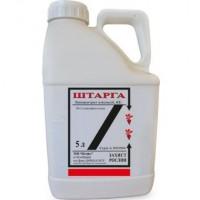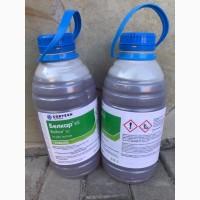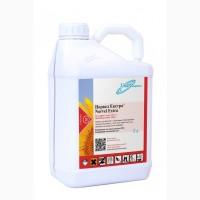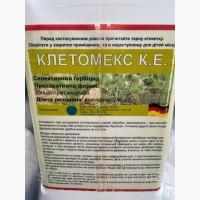/ Fertilizers and plant protection products / Herbicides / Lortama - a new post-emergence herbicide for protection...
Sell / buy
Lortama - a new post-emergence herbicide for the protection of corn crops from weeds, Kyiv region.
Price1000 UAH.
Region:All Ukraine,
Kyiv region.
(Vyshhorodok)
Updated:
Herbicide Lortam is a new post-emergence herbicide based on the innovative Rinskor™ active molecule for controlling major cereal and annual dicotyledons types of weeds in corn crops.
Content of the active substance: 146
флорпірауксифен-бензил (Rinskor® active), 5 г/л + нікосульфурон, 40 г/л + тифенсульфурон-метил, 10 г/л + антидот ізоксадифен, 10 г/л
Preparative form: oil dispersion
Mode of action: systemic
Consumption rate: 1.25-1.5 l/ha
Rate of consumption of the working solution: 151
200-300 л/га
Packaging: (4 x 5 l), the price is for 1 l.
Advantages of Lortam Herbicide:
an innovative product that contains the newest active substance Rinskor™ active;
a powerful anti-resistance solution;
control of a wide range of dicotyledonous weeds (white quinoa, ragweed, species of bitter gorse, species of sorrel, black nightshade, Theophrastus' ropewort and others);
enhanced control of cereal weeds, in particular types of millet, common plantain, mouse species, creeping wheatgrass and others;
control of carrionsunflower, including IMI- and ALS-technologies;
consistently high efficiency with each application under different climatic conditions;
modern formulation - oil dispersion - ensures the quality of the coating even in arid conditions;
high level of selectivity to culture;
a wide window of use - from 2 to 8 leaves in the culture;
absolutely safe for the following crops and has no restrictions on crop rotation.
Application of Lortam Herbicide:(//tractor-service.com)
Corn
Consumption rate - 1.25-1.5 l/ha
Spectrum of action - Annual and perennial grasses and annual dicotyledonous weeds
Time of application - from 2 to 8 leaves in culture (VVSN 12-18)
Number of treatments - 1.
Mechanism of action of Lortam Herbicide:
Rinskor™ active (florpyrauxifen-benzyl) belongs to a new class of chemical compounds - aryl picolinates and is the first active substance from this class that affects grasses, dicotyledons and some marsh weed species. According to the mechanism of action, it belongs to the group of synthetic auxins (HRAC group O). It mostly enters the plant through the leaves and moves through the phloem and xylem, accumulating in growth points and meristem tissues, and is also partially absorbed by the roots of weeds.
Nicosulfuron and thifensulfuron-methyl belong to the class of sulfonylureas. Both active ingredients control weeds through foliar action by blocking the biosynthesis of the plant enzyme acetolactate synthase (ALS).
Recommendations for using Lortam Herbicide:
the optimal temperature for use is from +12 to +25°С;
the optimal Ph of the working solution is 6-7;
the drug is resistant to being washed away by rain already 2 hours after spraying.
Precautions for using Lortam Herbicide:
do not use the herbicide in periods of cold weather and expected frosts and significant daily temperature fluctuations;
possible use with insecticides (except organophosphorus).
Proven Lortam Herbicide tank mixes:
Lortama is compatible with most products used in corn crops, however, when used in tank mixtures, in each case, before preparing the working mixture, it is recommended to check the miscibility of the drugs separately. Can be used with insecticides (except organophosphorus).
Crop rotation when using Lortam Herbicide:
Lortam's herbicide is safe for subsequent crops and has no restrictions on crop rotation. In autumn, after corn treated with Lortam herbicide, you can sowwinter cereals, winter rapeseed, and in spring you can sow all other crops.
Content of the active substance: 146
флорпірауксифен-бензил (Rinskor® active), 5 г/л + нікосульфурон, 40 г/л + тифенсульфурон-метил, 10 г/л + антидот ізоксадифен, 10 г/л
Preparative form: oil dispersion
Mode of action: systemic
Consumption rate: 1.25-1.5 l/ha
Rate of consumption of the working solution: 151
200-300 л/га
Packaging: (4 x 5 l), the price is for 1 l.
Advantages of Lortam Herbicide:
an innovative product that contains the newest active substance Rinskor™ active;
a powerful anti-resistance solution;
control of a wide range of dicotyledonous weeds (white quinoa, ragweed, species of bitter gorse, species of sorrel, black nightshade, Theophrastus' ropewort and others);
enhanced control of cereal weeds, in particular types of millet, common plantain, mouse species, creeping wheatgrass and others;
control of carrionsunflower, including IMI- and ALS-technologies;
consistently high efficiency with each application under different climatic conditions;
modern formulation - oil dispersion - ensures the quality of the coating even in arid conditions;
high level of selectivity to culture;
a wide window of use - from 2 to 8 leaves in the culture;
absolutely safe for the following crops and has no restrictions on crop rotation.
Application of Lortam Herbicide:(//tractor-service.com)
Corn
Consumption rate - 1.25-1.5 l/ha
Spectrum of action - Annual and perennial grasses and annual dicotyledonous weeds
Time of application - from 2 to 8 leaves in culture (VVSN 12-18)
Number of treatments - 1.
Mechanism of action of Lortam Herbicide:
Rinskor™ active (florpyrauxifen-benzyl) belongs to a new class of chemical compounds - aryl picolinates and is the first active substance from this class that affects grasses, dicotyledons and some marsh weed species. According to the mechanism of action, it belongs to the group of synthetic auxins (HRAC group O). It mostly enters the plant through the leaves and moves through the phloem and xylem, accumulating in growth points and meristem tissues, and is also partially absorbed by the roots of weeds.
Nicosulfuron and thifensulfuron-methyl belong to the class of sulfonylureas. Both active ingredients control weeds through foliar action by blocking the biosynthesis of the plant enzyme acetolactate synthase (ALS).
Recommendations for using Lortam Herbicide:
the optimal temperature for use is from +12 to +25°С;
the optimal Ph of the working solution is 6-7;
the drug is resistant to being washed away by rain already 2 hours after spraying.
Precautions for using Lortam Herbicide:
do not use the herbicide in periods of cold weather and expected frosts and significant daily temperature fluctuations;
possible use with insecticides (except organophosphorus).
Proven Lortam Herbicide tank mixes:
Lortama is compatible with most products used in corn crops, however, when used in tank mixtures, in each case, before preparing the working mixture, it is recommended to check the miscibility of the drugs separately. Can be used with insecticides (except organophosphorus).
Crop rotation when using Lortam Herbicide:
Lortam's herbicide is safe for subsequent crops and has no restrictions on crop rotation. In autumn, after corn treated with Lortam herbicide, you can sowwinter cereals, winter rapeseed, and in spring you can sow all other crops.
|
Shop, contacts | |
Yuriy / feedback, info. / activity evaluation | |
|
Phone:
+38(xxxxx
show
| |
All user ads ~1000 | |
Ad ID: #1031736
(added by registered user, registration date: 2016-08-10)
Added / Updated: 2025-10-15 09:17 (current, until: 15-10-2026)
Permanent Ad Address:
Impressions / views for today: ?, total: ?
Similar ads
There are many interesting ones among them...

